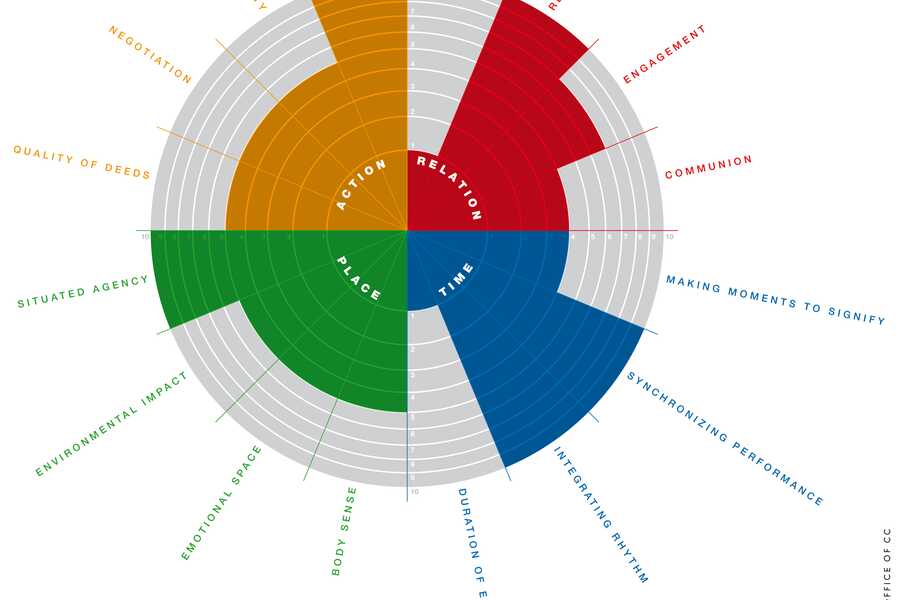Currently smart grid technology is developed worldwide. Boulder Colorado, for example, the first Smart Grid city in the USA, provided two-way connectivity to the city. Citizens can be both consumers and producers of energy and the Grid negotiates and divides according to the needs and possibilities of each household.
In Western Europe energy is available 24/7. In current energy market ‘supply’ follows ‘demand’. With the expectation that over time, as energy resources and needs change (for example with the introduction of electric vehicles) future Smart Grids have to be designed in such a way that ‘demand’ will follow ‘supply’.
YUTPA analysis Smart Grid

In this example the YUTPA framework is used to identify solution spaces for designing smart grid technology in West European cities.
Relation: Currently our role in energy nets is most often as a consumer. As more and more consumers become producers (prosumers) our roles change. Prosumers are more engaged with the energy they use. Critical solution space for designing smart grids is the facilitation of different forms of engagement allowing people and businesses to accept different roles in the production and consumption of energy. Smart reputation design is becoming a factor of significance, for example, related to the contribution prosumers make to societal sustainability. The shared meaning that may emerge as result of being involved with the smart grid, offers a solution space for both designed and emerging cultural dynamics that affect communities energy supply and demand.
Time: Personal duration of engagement with the electricity grid is characterized by moments of intense use and periods of non-use. However electrical current is available 24/7. Because of its ‘continual availability’ there is no need to integrate our personal rhythms with nature (day and night, cold and warm) or with our neighbours for more efficient energy use.
When energy is less abundant, two factors in the time dimension offer solution spaces for design. Smart integration of rhythms between people, communities, businesses and geographical regions, offers new opportunities for efficient energy production and energy use.
Secondly synchronization of performance between supply and demand create a solution space that can be explored in which new developments in ICT (Mobile networks, sensor technology and agent-based platforms) can significantly contribute. Concerning ‘moments to signify’, the current electricity net is seen as a utility that has to function 24/7. As consumers become prosumers, and actively both consume and produce energy new moments to signify may emerge. Designing new moments for signifying the way individuals and communities handle their energy use, may contribute to a new culture of energy and play a role in strategies for change.
Place: The experience of energy is bound to the place where the body resides. Body sense and environmental impact are fundamental to energy use. Energy keeps us warm, allows us to read at night, and makes ICT function. However, body sense and environmental impact are more a given than a solution space for design. Emotional space is not directly influenced, although the effect of no energy directly affects personal and relational spheres as indicated by the urban myth that a babyboom takes place 9 months after an energy black out. Situated agency is defined, for most, by turning on a switch anytime during the day and by paying (automatically) a bill once a month. The feedback to our ‘energy actions’ is immediate; a light turns on. The expense of our ‘energy actions’ is very remote; the bill comes weeks later. In a Smart Grid situation, local production of energy affects actions in day-to-day life, ‘demand’ follows ‘supply’ and feedback is experienced in the here and now. Surplus energy is traded locally, regionally or even globally, but all benefits are awarded locally. Design solution spaces in the place dimension for smart grids are mostly defined by the bandwidth for situated agency.
Action: The quality of deeds concerning energy are very diverse: cutting a tree for a fire, mining coal under the ground, executing operations in a nuclear plant, placing a solar panel on the roof or turning the windmill towards the wind, all have deep impact on day-to-day lives. Tuning human behaviour and the production of energy is one of the possibilities that Smart Grid technology provides. Developments in ICT (sensors, Internet of things, big data, agent technology) support personal and local aggregation of data on the basis of which energy use can be tuned/aligned with human behaviour.
Where today negotiation of energy resource provisioning (and prices) is mainly the domain of the electricity companies, communities of consumers are emerging in which energy production and consumption is negotiated. In such energy communities reciprocity in exchanging energy resources between participants directly affects the lives of the participants. Each of these factors (tuning, negotiation, reciprocity and quality of deeds) offers solution spaces for design of smart grids.
This short YUTPA analysis shows there are many design spaces for Smart Grid technologies in which individual presence and collective strive for survival and well-being are intertwined and where this interdependency can be fruitful.
Faced with different social and ecological crises, understanding the design space for presence is fundamental for social structures of the future. It should drive innovative solutions for next generation infrastructures. Our participation in complex distributed architectures and infrastructures requires the taking of responsibility. Having the possibility to enact our own presence, to execute our own agency is fundamental to infrastructures, architectures and governance structures that rely on us to take responsibility and accept accountability. Presence design as value sensitive design emphasizes participation as a way to manifest presence of participants involved.

